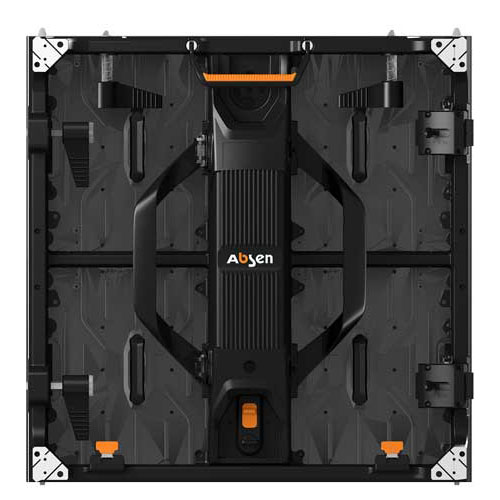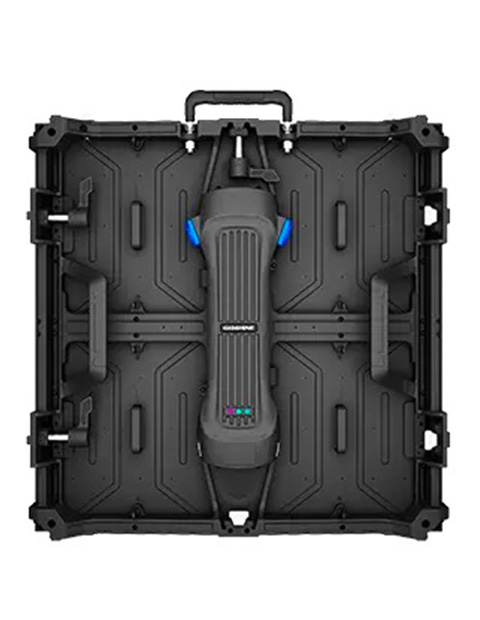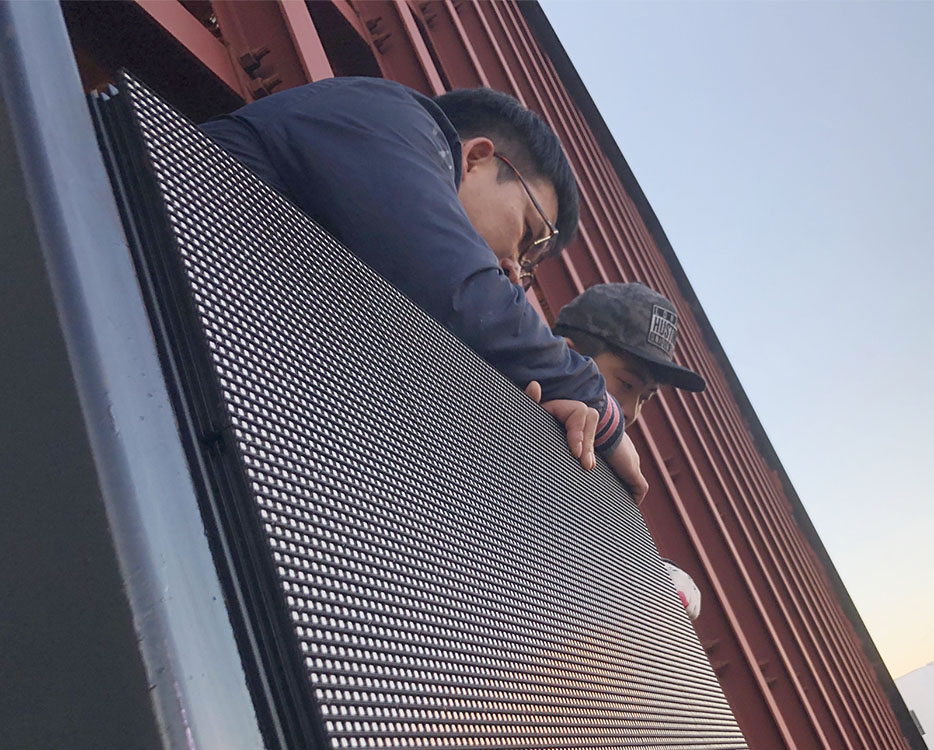In recent years, many churches are making a significant shift in their choice of display technology. The traditional projectors, once a staple in houses of worship, are gradually being replaced by modern alternatives such as TVs and used LED video walls. This transition is primarily driven by several key advantages that these newer technologies offer, making them increasingly appealing to churches.
Here is an overview of the three main options to help your church make the best choice:
LEDE/LCD TV for Church Displays
Appropriate Sizing
The first considering factor is the size of the TV you need for the room. LED TVs work well for smaller spaces that don’t need as much screen ‘real estate’ as projectors. The problem comes when churches try to replace a 90” x 144” screen (which works out to 170” diagonally) that’s correctly sized for the room with a large TV, say an 85” (41.6” x 74”) model.
LED display Engineers have created formulas that take into account viewing distance and text size to find the optimum screen size for a room. We think that will be big enough’ doesn’t take those factors into account.
The problem isn’t that the audience won’t be able to see the image at all. The issue is that from normal viewing distances, especially the furthest viewing distance in your sanctuary, the text would need to be larger, proportionally, to be legible.
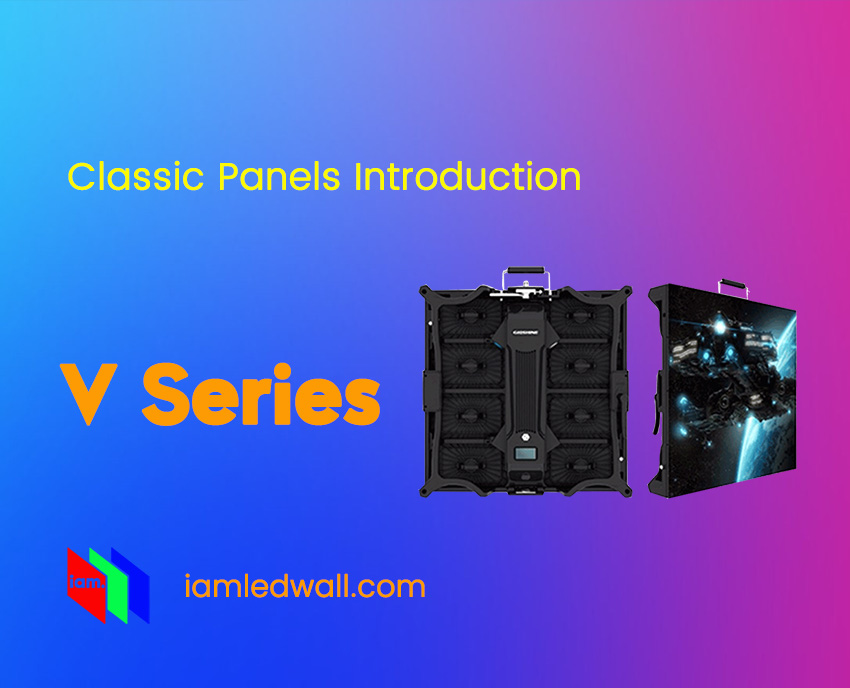
What size do i Need?
A display that is half as tall and half as wide as another isn’t just half the size, but a quarter of the size. So, an 85” LED or LCD screen is one fourth the area of a 170” screen. What you have in this example is a difference of 3,078.4 square inches vs. 12,960 square inches. That’s a pretty big difference.
Text Size
You might think that you’ll have to make the text a bit bigger. However, to get the same sized text (and that’s what you want), the font will need to be four times the size. A 50-point font will need to be converted to a 200-point font to see it as well. Try this: Measure your text as shown on a projector. Now, scale up that same text to show on the TV that you want to use in its place.
This also means that unless you’re using a very small portion of the LED or LCD screen for text now (less than one fourth), the television screen won’t be able to show as much text as the projector screen does.
Brightness and contrast play into legibility, but not enough to compensate for a 75% decrease in actual text size.
In a store, a 70” TV screen might seem huge when you’re 2 feet away from it, but cut out a piece of foam core or coroplast and put that in the room you intend for it to reside and go to the back of the room. Now, how big does it look? Probably a lot smaller.
Additionally, if you ever do IMAG (image magnification with a live video image on your displays), TVs make this virtually impossible. An extreme close up might be larger than life, but that’s the exception. Medium shots will look as small as a wide shot does in a normal IMAG system.
stage TV far
Also, don’t mistake the teaching TVs that larger churches use for primary displays. A room filled with several hundred to a few thousand people won’t be able to see the details without IMAG displayed with projectors or LED video walls. TVs just won’t cut it in this situation.
There are things you can do to compensate beyond increasing text size. Consider using more TVs, for example. If the viewing distance from the front of the sanctuary to the back is too far, add TVs halfway back. In effect, you’ve just doubled the size of the screen to the back row.
TV Video Walls for Church Displays

Another way is to use multiple TVs wall, preferably utilizing professional-grade TV wall designed for this specific purpose, to create a tiled video wall setup, thereby expanding the available display area.
The rationale behind choosing professional displays for such installations lies in their narrower bezels, which significantly reduce the separation between different parts of the image. Additionally, they offer superior color consistency. While you can fine-tune the color representation of consumer televisions to an impressive degree when used individually, the situation changes when they are arranged adjacent to one another to form a cohesive image. In such cases, even a slight color variation, like one TV appearing slightly bluer than the others, will manifest as glaring color discrepancies.
Using multiple video screens can deliver an outcome akin to that of a single projector or LED wall if the final display size matches the original. For instance, if your objective is to replace a 170” diagonal projector screen, employing four 85” screens would yield an equivalent size while affording greater brightness.
Nonetheless, it’s important to acknowledge that both of these approaches have a distinct drawback. The cost factor becomes a significant consideration, as utilizing four or more TVs, especially professional-grade displays, tends to surpass the expenses associated with a single projector and screen setup.
Glare and Reflections
Finally, don’t forget to consider the possibility of glare. Most televisions have glossy screens. As a result, stage lights, windows, and even (depending on the background you’re showing) reflections of people in the congregation might be distracting. Like a mirror, reflections can come from one direction and bounce off in another.
When you install the TV it might look fine from one viewing angle. However, another angle might have a blinding reflection from a light or even an inappropriate view of someone that you can only see when the background is dark enough or the viewer is in exactly the right spot. Having the correct mount, which allows you to tilt the screen down slightly may solve some of these problems, but not all.
TVs as Church Displays Pros:
Initial and maintenance cost;
brightness
TV as Church Displays Cons:
Glare;
generally too small for all but the smallest churches; professional options are potentially more expensive than projectors
Projectors for Church Displays
While projectors might seem like old technology to some, they can still be a viable alternative to TVs in spaces that need more than even a large TV can provide.
When your room requires a display that’s over a certain size (roughly 85-90 inches), projectors start to make more sense. At 110 inches or so, they become your most cost-effective option.
You will need a screen to project on to, but, unlike TVs and LED video walls, a projector is somewhat flexible when it comes to the size of screen you can use. As such, you might start with one size and change to another or rent a larger screen for special events. The only things that change are the size of the pixels and brightness.
If you’re trying to fix an issue with a washed out image or think the cost of new lamps is too high, perhaps the problem isn’t that you need to replace projectors with TVs (or LED displays), but that you need a more modern projector.
For example, you have a 2,000 lumen 1024 x 768 projector model that can scale to 1080p. You’ll be surprised what you get from a laser projector that is native 1080p with 10,000 lumens. If instead of doing front projection, you do rear projection, the difference can be even more pronounced.
Laser projectors, while more expensive than lamp-based models, don’t have the same maintenance costs. Also, they often last 10,000 hours (13.5 months if used 24/7, instead of a few hours a week, as you’ll likely use them) or more.
Another advantage that’s shared with TVs and laser projectors is a quick start and shutdown time.
Finally, keep in mind that projectors are mostly useless in direct sunlight. If you’re doing an outdoor festival with IMAG, you’ll have to go with a different technology.
For most applications, projectors remain the most viable display technology for all but the smallest and largest churches.
Projectors as Church Displays Pros:
Large image size;
proven technology
Projectors as Church Displays Cons:
Perceived higher cost;
most have ongoing maintenance costs
LED video walls for Church Displays
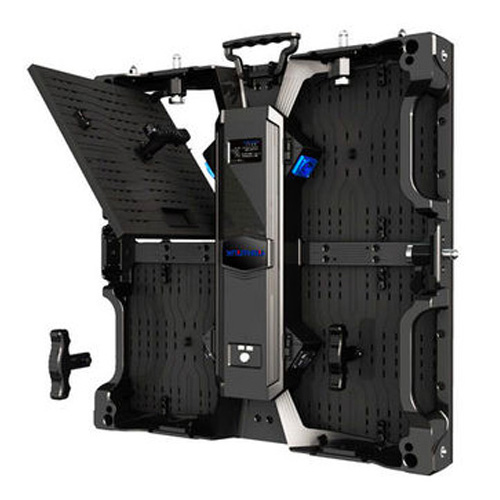
Used Lightlink P3.9 indoor LR Pro
Type: Indoor rental LED display
Pixel Pitch: P3.9/3.9mm
LED: KinglightIC:ICN2153
Receiving card: Novastar
Cabinet Size:500×500
Produced Year: 2018Stock: 50SQM
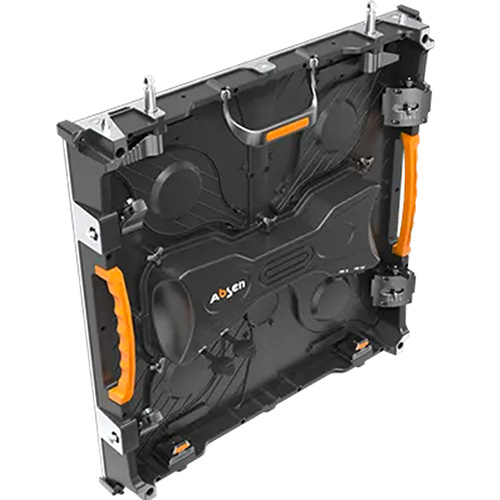
Used Absen P3.9 indoor DW2
LED: Kinglight
IC:ICN2153
Receiving card: Novastar A4s plus
Cabinet Size:500×500
Produced Year: 2020
Stock: 100SQM
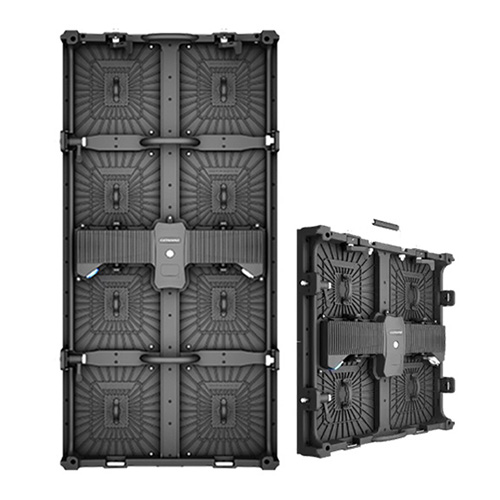
Used Gloshine P3.9 LS indoor
Type: Indoor rental LED display
Pixel Pitch: P3.9/3.9mm
LED: Kinglight SMD2020
IC:ICN2053Receiving card: Novastar A5s Plus
Cabinet Size:500×500 & 500×1000
Produced Year: 2021
Stock: 300SQM:(curved)/50SQM:500×500
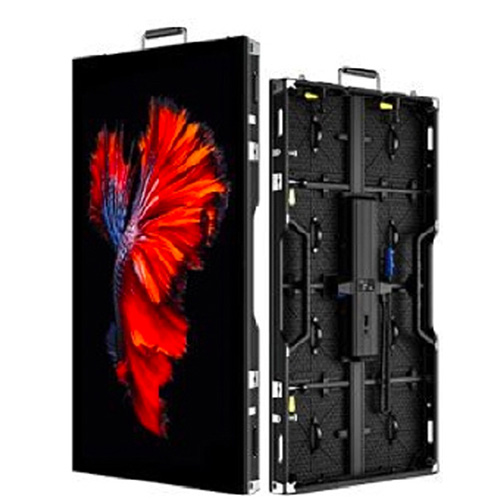
Used Di Color P3.9 indoor D series
Type: Indoor rental LED display
Pixel Pitch: P3.9/3.9mmLED: Kinglight
IC:ICN2053Receiving card: Novastar
Cabinet Size:500×1000
Produced Year: 2018Stock: 60SQM
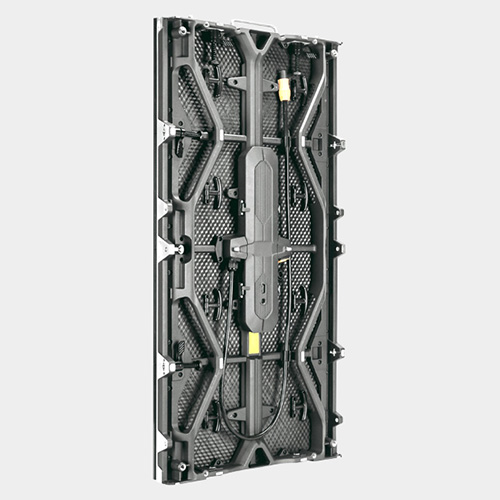
Used Di Color P3.9 indoor DP series
Type: Indoor rental LED display
Pixel Pitch: P3.9/3.9mm
LED: Kinglight
IC:SUM2053Receiving card: Novastar
Cabinet Size:500×1000
Produced Year: 2019
Stock: 50SQM
LED video walls have distinct benefits that the others don’t have with a few limitations to consider.
Indoor vs. Outdoor Applications
In large rooms with a lot of light, especially natural light, LED video walls remain viewable when other displays would suffer from glare or be washed out completely. Since there are LED video walls designed for either indoor or outdoor applications (although, sometimes both), you might find that the wrong wall will be either too bright (outside wall used inside) or too dim (inside wall used outside in direct sunlight). Not all walls are weather resistant either so be careful that you’re looking at the right wall for your application.
Panel Size and Pixels
Since these LED displays are often comprised of 1/2 meter square panels, each containing tens of thousands of RGB LEDs, they can be expensive. One important thing to realize is that pixel pitch (the distance between the centers of two adjacent LEDs) really matters. An LED video wall with a pixel pitch of 6 mm can be used to create a 1080p wall in a fairly small area (not much larger than a large-sized TV). A 4 mm pixel pitch would require about 8 meters x 4.5 meters (give or take) to show a 1080p 16:9 image.
As LED video walls are typically composed of these panels, they’re not locked into a fixed 4:3 or 16:9 aspect ratio. While you can build a wall that’s four panels wide and three panels tall or 16 by nine, you’re not limited to those. So, you could just as easily build a wall that’s 20:13 or 9:16.
Display Products Quality
There’s a lot of variety in these displays in terms of quality. Buying one directly from the factory could cause problems you don’t normally encounter with electronics that you get from local sources.
Electromagnetic interference (which the FCC is starting to crack down on) and build-quality (which could quickly turn your dream of a good price into a nightmare) are just two of the problems that could arise as a result of buying from the wrong factory.
Brightness
Because LED video walls tend to be brighter than projectors and, to some degree, televisions, they can look very good on camera when shot with IMAG. This also comes with a downside that lighting techs might be concerned with. It’s possible that your LED wall will be a large source of light that can balance or even overwhelm other lighting. Happily, LED video walls can be dimmed or brightened to a certain degree, but that’s something to consider in your planning.
Assembly and Installation
When install LED video walls, one often encounters a critical concern: their weight. Even though these LED video walls might feature aluminum cabinet that enhance stability, it’s essential to remember that lightweight materials can become quite hefty when amassed in substantial quantities. Thus, it’s important to seek the expertise of a structural engineer before assuming that your chosen platform or ceiling can bear the weight of a large LED wall. The correct installation of LED wall is a task best left to a seasoned professional.
This is where the value of a professional rigger truly shines. Enlisting the services of a rigger not only safeguards your investment in the structural integrity of your building but also ensures the well-being of the LED wall itself. Proper rigging isn’t merely a matter of convenience; it can genuinely be a matter of life and death, given that LED video walls can weigh hundreds, if not thousands, of pounds.
Additionally, there’s the crucial consideration of viewing distance. Those who have participated in the installation of an LED wall or attended an event featuring one can attest to the optical illusions and potential dizziness that can arise if viewers get too close. To prevent these issues, it’s vital to ensure that people will be positioned at an appropriate distance from the LED wall for a comfortable and visually pleasing experience.
LED video walls as Church Displays Pros:
Modular, bright, works in IMAG shots
LED video walls as Church Displays Cons:
Heavy, expensive specific viewing distance requirements
Conclusion:
How to choose the ideal display technology for your church hinges on a variety of factors.
For smaller church application, utilizing LED TVs is often the more practical choice. Their compact size and flexibility make them a fitting solution to provide clear visuals in such settings.
In most standard worship spaces, projectors tend to offer a more favorable solution. Their ability to project large, high-quality images onto screens or walls can enhance the congregation’s experience.
However, when it comes to outdoor gatherings or larger church venues, LED video walls emerge as a compelling choice. Their brightness, clarity, and versatility make them well-suited for these expansive settings.
Each display technology has its own set of unique advantages that can either elevate or hinder the worship experience, so selecting the most fitting option should be a thoughtful and informed process.
